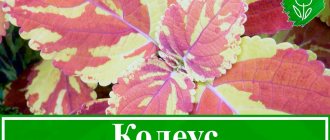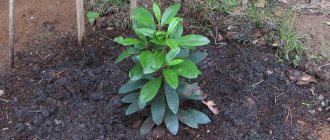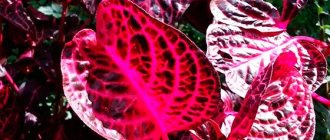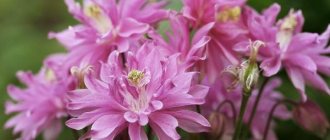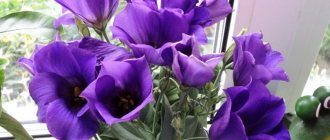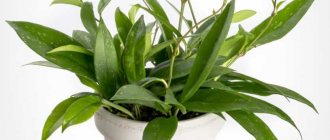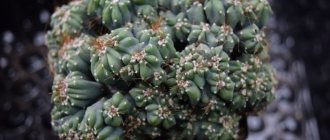An unpretentious perennial succulent of the Crassulaceae family, which will add bright colors to any flower garden or decorate a windowsill, is hare cabbage (sedum). It blooms with small flowers from mid-summer until autumn. Sedum can be ground cover, ampelous or erect.
Hare cabbage - what is it?
This name hides several plants at once. These are common sorrel, mantle, young and sedum. Of these, sedum and common sorrel are used as medicinal herbs in folk medicine. The healing properties of these herbs are used to cleanse blood vessels, to strengthen and improve immunity, normalize metabolic processes, and to treat the digestive system. The sedum flower is not conspicuous; it has a dense inflorescence of small pink flowers.
What does hare cabbage look like?
The main representative of the genus Sedum, or Sedum in Latin, is the large or common sedum. This perennial plant belongs to the Crassula family. Has a short rhizome. The shoots are succulent, not branching, erect. The leaf blades are fleshy, oblong-elliptical in shape, arranged oppositely. The leaves of sedum can have not only the traditional green color, but also bluish, pink, gray and others. As it grows, it forms a lush subshrub up to 90 cm high.
It is interesting to know how hare cabbage blooms: the inflorescences are corymbose-paniculate, dense, located on short stalks. The flowers are star-shaped, small. They can be blue, pink, white, yellow. The flowers emit a strong aroma, which attracts numerous insects. Sedum is a honey-bearing plant. Flowering period from July to October.
Indications and contraindications
Common hare cabbage was previously actively used in cooking for preparing salads, added to first and second courses, and used as a filling for baked goods.
Herbalists have long used hare cabbage to treat colds and gastrointestinal diseases. The herb was often used to eliminate bleeding and accelerate the healing of wounds and injuries. The juice of the plant was recommended for the treatment of scabies and stomatitis. The high content of vitamin C in the plant improves the condition of scurvy.
Most often, treatment with this herb is recommended for inflammatory pathologies, for example, tonsillitis. It can treat ulcers and other skin lesions. It also has an antiseptic effect.
Do not treat hare cabbage if the patient has had seizures or is diagnosed with epilepsy, has blood clotting problems, or pancreatic disease.
The plant is poisonous and can have a negative effect on the body if used uncontrolled.
Sedum species
There are many varieties of sedum, but they can be roughly divided into cold-resistant and heat-loving. The latter are grown indoors, and the group of cold-resistant species is represented by perennial ground cover sedums. Let's look at the main representatives of this plant:
- Linda Windsor
. It has burgundy stems, dark red leaves and ruby flowers. Height 30-40 cm. Blooms relatively late in August-September. The bush holds its shape perfectly and does not fall apart. - Morgana
. The heat-loving succulent in our latitudes is grown indoors as a perennial hanging plant. The leaves look like scales, the shoots themselves hang down. Because of the unusual appearance of its shoots, this plant is called “Monkey or Donkey Tail.” It has a long peduncle with pink-red flowers. - Red-colored
. Stems up to 30 cm long have an unusual color: green at the base and red at the tips. The flowers are bright yellow. - Steel
. This variety is a shrub, reaching a height of 20 cm. It grows well in indoor conditions. The leaves of the plant are reddish-brown with a little down. The flowers are yellow. The leaves fall and take root in the soil.
Decorativeness made you look younger
Interest in the decorative properties of juveniles arose in the 18th century. At the same time, the basic techniques for planting these plants developed - borders and carpets of young plants appeared in French gardens. They were traditionally used as ornamental plants in parterres, creating lines and shapes. Free, asymmetrical landing appeared later, at the end of the 19th century. At the same time, the first European rock gardens arose, and young plants took their permanent place there, traditionally adjacent to low ground cover sedums and saxifrages.
In the second half of the twentieth century, young plants became the object of close attention of flower growers, and their targeted selection began. The Dutch and Americans, the Germans and the British fell ill with this hobby at different times. Breeding achievements in recent decades have followed the new fashion for colored plant forms. Already in Europe there are many spectacular dark-colored cultivars - from dark carmine to almost black, or rather, deep purple, because black plants do not exist in nature. But in our country, specimens of deep, rich color are not yet common.
In general, the number of juvenile varieties today is quite large. The number of registered people has already exceeded four thousand. This figure far exceeds the original sixty species. So we can assume that man’s attempt to improve nature in this case was a success. We can only hope that these hordes of cultivars will gradually become available to Russian amateurs.
Numerous varieties of juveniles present a wide range of different colors of rosettes. There are green, silver, yellowish, pink, burgundy, and some varieties change leaf color depending on the season. This allows them to be widely used in creating colorful “carpet” coverings. When grown together, different species can cross-pollinate, and many hybrids have been produced in culture. Interspecific hybrids have been described even from natural habitats.
Rejuvenated. © Son of Groucho
Planting hare cabbage
Varieties of plants of the sedum genus can be sown by seeds and planted in seedlings, cuttings or dividing the bush. When planting seeds, soil mixed with sand is poured into a container and covered with a layer of coarse sand on top. Next, place the seeds at a distance of 0.4-0.5 cm. Well irrigate the soil along with the seeds from a spray bottle, cover with film and leave on the bottom shelf of the refrigerator for stratification (keeping the seed material for accelerated germination) at a temperature of 0-5°C. Periodically, the crops are opened for ventilation.
After two weeks, the container is placed on the windowsill. The first shoots will appear in 2-3 weeks. All this time, the container with seeds needs to be ventilated, sprayed with water and excess condensation removed. The stratification process can be done by sowing seeds before winter in a container and leaving it in a greenhouse or digging it in the garden. In the spring, such a container is brought home. Planting in open ground and cleaning to a permanent place is carried out when the threat of night frosts disappears.
Soil for sedum
This plant grows well in any soil. As a succulent, bunny cabbage grass prefers soil with good drainage. Poor, sandy soils are suitable for creeping species. Hare cabbage produces tall and profusely blooming flowers on nutritious loamy soils. Particular attention should be paid to soil moisture. Since plants of this genus grow on arid soils, you should not place sedum in lowlands and places where moisture can accumulate and stagnate.
Useful composition of the plant
All types of plants have medicinal properties, only sedum is toxic. Therefore, its use is strictly dosed. The medicinal properties of almost all types are the same, the benefits are due to the chemical composition:
- alkaloids have an analgesic effect, calm the nervous system for joint pain and lower blood pressure;
- tannins prevent inflammatory processes, fight microbes, normalize the activity of the gastrointestinal system;
- glycosides have a calming, diuretic, antimicrobial property, dilate blood vessels and improve secretion discharge;
- Vitamin C normalizes the activity of the endocrine glands, nervous system, hematopoiesis, strengthens defenses, removes toxins and helps absorb iron;
- organic acids stimulate metabolism, insulin production, calm the nervous system, improve the functioning of the stomach and intestines, the immune system, blood vessels, help eliminate toxins and reduce cholesterol;
- ash has an anti-inflammatory, antiseptic effect, slows down blood clotting and prevents the formation of blood clots;
- flavonoids have choleretic properties, normalize the activity of the myocardium and adrenal glands, and stabilize blood pressure;
- saponins have a restorative, diuretic, sedative effect, prevent the formation of atherosclerotic plaques;
- coumarins inhibit malignant cells in oncology;
- mucus has anti-inflammatory and enveloping properties, which causes sputum to be discharged.
Sedum is a good remedy for anemia, fever, and eye disease.
Rabbit cabbage - care
An unpretentious plant that requires no effort when growing. Let's look at the main features of cleaning care:
- Hare cabbage does not like thickening and weeds. Prefers spacious, well-lit places. Sunlight is very important for this plant.
- Watering is necessary only in hot summers and in moderation.
- To create an attractive appearance, old, faded shoots must be cut off.
- Before the start of winter, the sedum should be covered with non-woven material and spruce branches. In frosty winters with little snow, hare cabbage may freeze.
- Once every five years, the bushes need to be divided and replanted in a new place.
Watering sedum
Plants of the Crassulaceae family do not tolerate excessive watering. Moisturizing should occur after the earthen clod has completely dried. Hare cabbage is a plant whose roots begin to rot with frequent watering. As for indoor plants, approximately watering sedum should be done no more than twice a week, and in winter once every 25-30 days, and the soil must dry out. It is better to “under-water” a plant than to over-water it. For indoor plants, after watering, after half an hour, it is necessary to remove the water from the pan. Sedum does not need spraying.
Feeding sedum
Preferring poor, sandy soils, the sedum plant grows well in garden plots without the addition of additional fertilizers. Nutrients can be added to indoor varieties of this plant. A special fertilizer for succulents is suitable for this. It is advisable to fertilize once a month in early spring. From September to March there is a dormant period when there is no need to apply fertilizers.
Pruning sedum
Before winter, you need to prepare hare cabbage and cut the plant, leaving only 3-4 cm above the soil level. Then sprinkle with a layer of soil. Cut shoots can be placed in water and, when roots appear, transplanted into the ground, thereby propagating the plant. Rabbit cabbage flowers need pruning after flowering to maintain an attractive flowering bush. In creeping types of sedum, elongated shoots are pruned, which disrupt the overall decorative appearance.
Problems during cultivation
Why doesn't it bloom?
Oxalis stops blooming if it overwinters without a dormant period - this leads to depletion of the plant. In addition, excess fertilizer has a negative effect on flowering. It is necessary to reconsider the feeding regime and give the flower a rest by placing it in a cool room.
Diseases
Due to excessive watering and stagnation of moisture in the soil, root rot can develop. Oxalis should be transplanted into dried soil, remove all parts of the plant affected by the disease and reduce watering. Fundazol is also used for treatment.
Pests
Oxalis is rarely affected by pests, but from time to time spider mites and aphids may appear on the leaves of the plant.
To get rid of these insects, you need to prepare a soap solution by diluting 1 tablespoon of soap in 1 glass of water and spray the sorrel with it.
In case of severe damage, it is necessary to use insecticides - “Fitoverm”, “Akarin” or “Aktellik”.
Hare cabbage - reproduction
Getting a hare cabbage flower on your property is not difficult, since there are several ways to propagate this plant. Let's list them:
- Seeds
. This method is painstaking and requires time and effort. Suitable for planting new varieties or breeding. - By cuttings
. This vegetative method is convenient for propagating existing sedum plants. To do this, either before flowering begins or after it ends, shoots about 10 cm long are cut off, the lower leaves are removed and buried in a mixture of sand and soil. After rooting, the plant is transplanted to a permanent place. - Dividing the bush
. Propagation by dividing sedum can be done in early spring by digging up the entire plant, clearing it of soil and dividing it into several parts. Then treat the sections with a fungicide and put them in a cool place to dry for several hours. Then they are planted in a permanent place.
Photo gallery
Oxalis leaves reach a length of 2.5 cm and a width of 3 cm. They consist of three separate lobes, which fold lengthwise in a few minutes and droop before inclement weather, at night and due to mechanical irritation.
Oxalis has small flowers located at the ends of thin stems. They consist of white petals with pink-violet veins. Inside the inflorescence there are 2 circles, each of which consists of 5 thin stamens. In the middle there is a pistil, which has 5 long columns with stigmas at the ends and the ovary of future seeds from 5 nests. Blooms from early or mid-May to late July.
The fruits of oxalis are difficult to notice. They are small green balls that are located where flowers used to be. If you touch the fruits of sorrel, they seem to explode and “shoot” seeds. This happens due to the presence of a special “device” on the side of the seeds, which operates on the principle of a repulsive spring.
Replanting sedum
It is not advisable for sedum to grow in one place for more than five years. It is necessary to replant the plant to a new location. This can be done by cutting off old shoots and digging up the entire bush. Then prepare a hole in a new place by first pouring sand and wood ash into it and place the plant, covering it with a layer of earth. Transplantation is carried out in early spring. Indoor sedum plants need to be replanted very carefully, since the leaves may break off when touched, and the hare cabbage will lose its attractive appearance.
Hare cabbage in landscape design
The species diversity of the hare cabbage plant includes more than half a thousand varieties. Every gardener will find a plant to their liking, and thanks to its heat resistance, frost resistance and ease of care, sedum takes pride of place in any garden. Hare cabbage in landscape design is used for planting in rockeries, rock gardens and mixborders. The main varieties used are "Matrona", "Purple Emperor" and "Autumn Joy".
- Burgundy species go well with bright greens.
- Bright bushes can decorate garden paths.
- Green compositions with beautiful pink splashes.
- A beautiful stream can be formed from fresh flowers.
Medicinal properties
Medicinal properties and contraindications of purple sedum.
Fever grass (Purple sedum) is known for its medicinal properties . The juice contains organic and amino acids, as well as carbohydrates and polysaccharides. The composition also contains ascorbic acid, kakhetin, carotenoids, macro and microelements.
Application
Purple sedum juice is a hemostatic and wound healing agent . Thanks to its chemical composition, the juice improves metabolic processes, which leads to the regeneration of damaged tissues. The pulp of the leaves can have an anti-inflammatory effect.
The juice and pulp of fever grass is used to treat difficult-to-heal wounds, injuries, and chronic inflammation of the sinuses. Positive results are observed in the treatment of periodontal disease.
Quite often, skripun, in the form of an alcohol tincture, is used in the treatment and prevention of the formation of a malignant tumor.
The leaves help in treating burns and hemorrhoids.
With the help of sedum, immunity is increased and the functioning of the cardiovascular system is supported. The functioning of all internal organs also improves.
It is also used for gynecological diseases (fibroids, cysts, infertility). In men, it is used in the treatment of prostatitis, and also has properties that increase potency.
Most methods are traditional.
Self-treatment can lead to complications. Therefore, before consuming or using it as a medicine, you should always consult your doctor.


